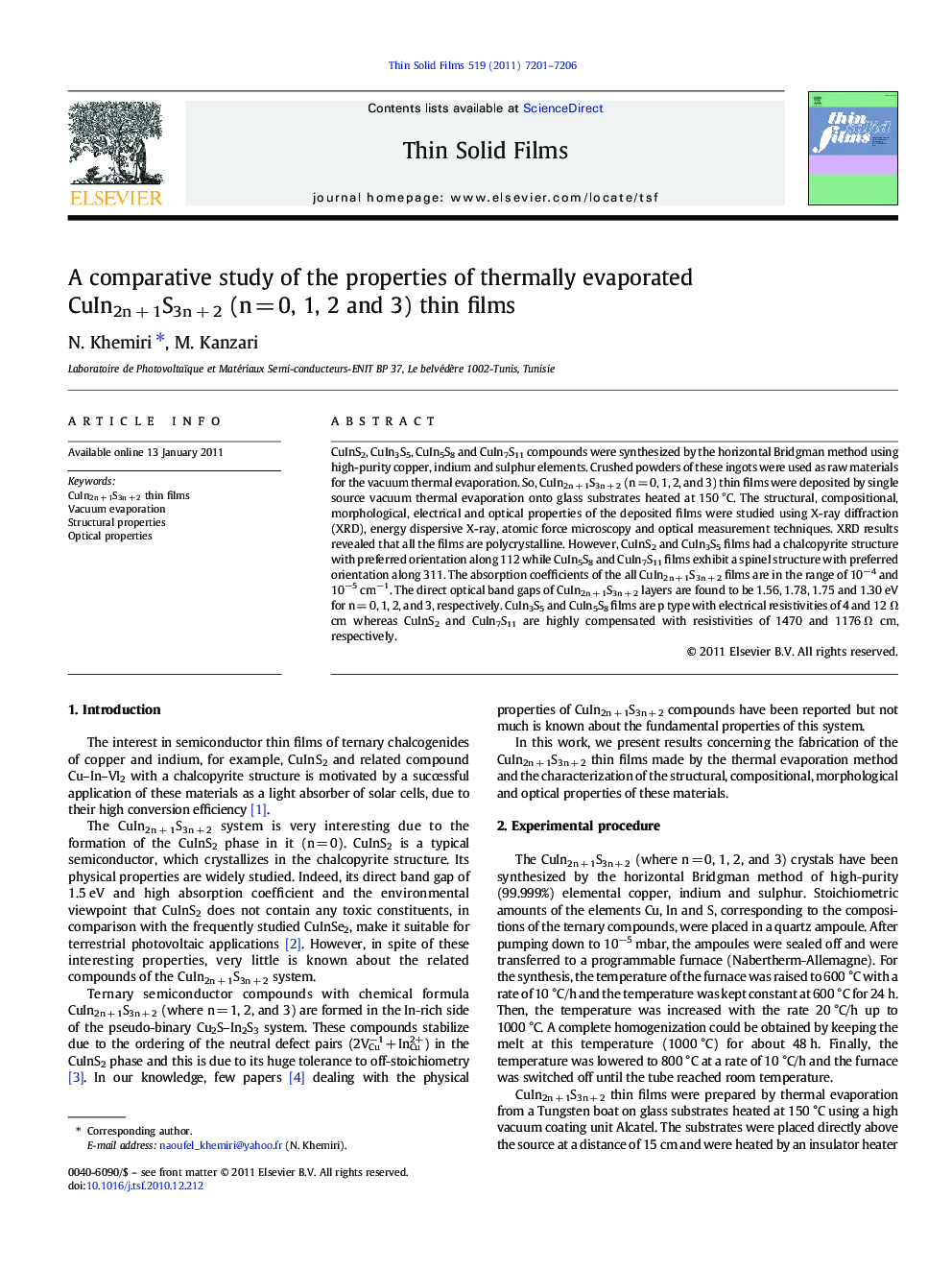| Article ID | Journal | Published Year | Pages | File Type |
|---|---|---|---|---|
| 1668987 | Thin Solid Films | 2011 | 6 Pages |
CuInS2, CuIn3S5, CuIn5S8 and CuIn7S11 compounds were synthesized by the horizontal Bridgman method using high-purity copper, indium and sulphur elements. Crushed powders of these ingots were used as raw materials for the vacuum thermal evaporation. So, CuIn2n + 1S3n + 2 (n = 0, 1, 2, and 3) thin films were deposited by single source vacuum thermal evaporation onto glass substrates heated at 150 °C. The structural, compositional, morphological, electrical and optical properties of the deposited films were studied using X-ray diffraction (XRD), energy dispersive X-ray, atomic force microscopy and optical measurement techniques. XRD results revealed that all the films are polycrystalline. However, CuInS2 and CuIn3S5 films had a chalcopyrite structure with preferred orientation along 112 while CuIn5S8 and CuIn7S11 films exhibit a spinel structure with preferred orientation along 311. The absorption coefficients of the all CuIn2n + 1S3n + 2 films are in the range of 10−4 and 10−5 cm−1. The direct optical band gaps of CuIn2n + 1S3n + 2 layers are found to be 1.56, 1.78, 1.75 and 1.30 eV for n = 0, 1, 2, and 3, respectively. CuIn3S5 and CuIn5S8 films are p type with electrical resistivities of 4 and 12 Ω cm whereas CuInS2 and CuIn7S11 are highly compensated with resistivities of 1470 and 1176 Ω cm, respectively.
